Signs That You Might Need Braces
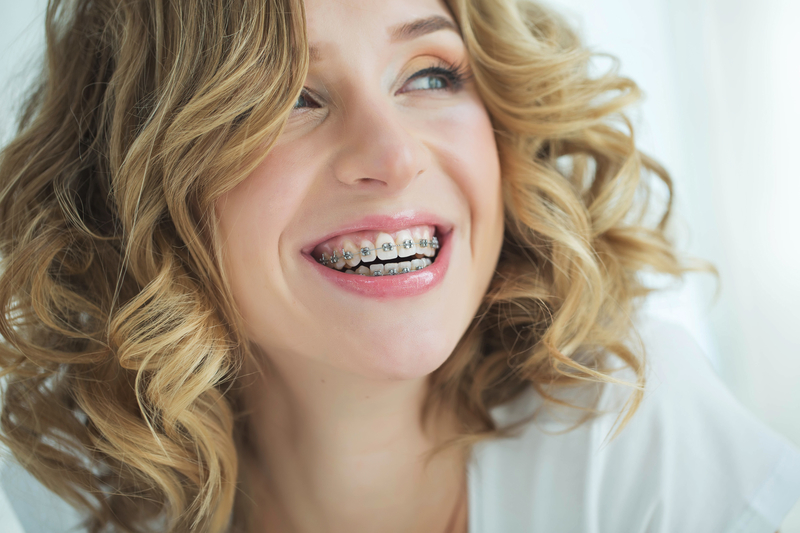
For many patients, getting braces is a big decision that affects oral health. How do you know whether you or your child needs braces, though? Some symptoms are obvious: misplaced or crowded teeth, or teeth that don’t meet normally. Other signs that you need braces are more inconspicuous, though, such as biting the cheek or a jaw that pops or shifts. While some of these symptoms are more serious than others, orthodontic care is the way to go to alleviate pain and correct any underlying issues. Learn about what signs you should be looking for to decide if braces are right for you with these tips!
What To Look Out For
As our teeth begin to erupt at a young age, they can fill into improper spaces or cause problems with adjacent teeth. Crooked or misaligned teeth aesthetically aren’t very pleasing for people, and most patients end up receiving orthodontic treatment during some point in their lives. Orthodontic problems don’t always mean crooked teeth, though. While there are some obvious signs that you might benefit from orthodontics, such as crowded teeth or an underbite/overbite, there are other symptoms that are less noticeable but equally as undesirable. The American Association of Orthodontics recommends that children have their first orthodontic visit between the ages of 7 and 8, but if certain complications are present, your child does not and should not wait until that age to be seen. If you have a young child, look for some of the following symptoms that warrant orthodontic care:
- Thumb or finger sucking
- Early, late or irregular loss of baby teeth
- Difficulty in chewing or biting
As children age, orthodontic problems will begin to show themselves, but some don’t appear until adulthood. No matter your age or prior orthodontic care, there are other symptoms that indicate a problem and should be addressed by an orthodontist. If you are struggling with a popping jaw, have to breathe through your mouth on a regular basis, are constantly biting your cheeks, and/or noticing teeth or jaws that are out of proportion to the rest of your face, you should have an orthodontic consultation. While many of these symptoms seem harmless or aren’t very noticeable, they can have long-term consequences that can negatively affect your oral health. Braces can remedy these issues so that your oral health isn’t compromised. It’s never too late for you to take charge of your oral health and get the smile that you deserve!
Advantages of Early Orthodontics
Not all kids will need orthodontic care, but many will. Meeting with your child’s dentist early on will help them determine whether your child would benefit from orthodontic treatment. If you have a child who needs an orthodontic issue remedied, there are certain advantages that come after receiving braces. Having your child evaluated by an orthodontist can help he/she observe the progress of incoming teeth, guide teeth into their ideal positions, monitor face and jaw development, detect hidden dental issues and reduce the risk of impacted teeth. For young children, orthodontic visits can sometimes be scary. Nonetheless, child orthodontic visits are simple and non-intrusive, so as to keep your child comfortable and happy. At Belmar Orthodontics, we do our best to give your child the care they need while making sure that their fears and questions are addressed. For adolescents, our options at include aesthetically-minded treatment options that will help your teen feel less self-conscious about braces. Braces can sometimes be seen as “dorky” or “uncool” for teens, but the list of options your teenager can choose from will give them plenty of choices to get straight teeth while still looking cool. Good oral health habits are started at a young age, and bringing your child in to see the orthodontist will help them establish those habits that will last a lifetime.
How You Can Benefit From Adult Orthodontics
Against popular belief, braces and orthodontic care aren’t just for kids and teenagers! In fact, one in five orthodontic patients is an adult; in just the U.S. and Canada alone, more than a million orthodontic patients are adults! You, as an adult, can benefit from the same care that young patients do and fix the orthodontic problems that you’ve been suffering from since childhood. As long as your teeth are healthy, you can receive orthodontic treatment at any age. The most common benefits of adult orthodontics include the following:
- More discreet treatment methods
- Correction of lifetime dental issues
- Faster treatment time than previous treatments
- Increased confidence and self-esteem
It’s important to note, however, that any previous orthodontic problems, such as periodontal disease or decayed/missing teeth, will need to be addressed before an orthodontic appliance can be placed. Once those issues are fixed, you’ll be fitted with braces and can continue your life just as usual. If you so choose, you can even opt in for hidden lingual braces or Invisalign clear, which will get you the straight teeth that you want while being completely unnoticeable. Speak with your orthodontist to determine which braces would be best for your needs before making any decisions.
Staying On Top Of Your Oral Health
Before any patient can receive orthodontic treatment, the health of their teeth, gums and mouth will first be evaluated. For this reason, it is important that children and adults alike are brushing twice a day and flossing on a nightly basis. The foods we eat also affects our oral health, as well. Especially during orthodontic treatment, certain foods, like sticky or sugary candies and food, can damage orthodontic appliances and make it easier for tooth decay to develop as plaque builds up on teeth. Brushing and flossing will partly diminish the effects of these foods, but not entirely. Make sure that you and your children are eating a healthy diet with minimal sugary snacks to avoid dental complications during treatment.
To ensure good oral health during and after orthodontic treatment, schedule an appointment with Belmar Orthodontics at (303) 225-9016 for a consultation.
Diastema: What Is It?

A gap between the teeth, called “diastema,” are common among many dental patients and can be found between any teeth in the mouth, but usually between the two upper front teeth. Why do these spaces develop, and what are the differences between a diastema in children versus adults? Diastemata develop through a variety of reasons, such as misaligned jaw bones, missing teeth, and thumb-sucking. Not all spaces can be prevented, but many can be adjusted through orthodontic treatment. If you have a diastema that you would like to have treated, learn what your treatment options are through this guide!
Changes in Orthodontic Care
Orthodontic treatment options have been revolutionized through modern technology and dental science. Poorly aligned teeth have been a nuisance for dental patients for hundreds of years, and orthodontic work was even performed on willing subjects dating back to the ancient Egyptians and the Romans. From crude metal bands to catgut, archaeologists have discovered that even ancient societies performed orthodontic care on patients in an effort to straighten teeth. For those suffering from malocclusion, or misalignment, a common practice for moving emerging teeth into their correct position was by regularly pushing them with the fingers, a practice that has long been outdated since the invention of custom-fit metal appliances in the 18th century. Eventually, orthodontics treatment evolved into the process that we see today: brackets being cemented to each individual tooth with a metal wire attached to cinch the teeth together. Options for invisible treatments, such as lingual braces or even Invisalign, further allow patients to choose how they straighten their teeth. While there are so many options to choose from to decide how to straighten our teeth, how our teeth first develop and erupt in our mouth is a separate process. Since every patient is different and will experience a variety of dental issues, some patients may face something called “diastema,” which can have certain dental complications and be caused by a variety of reasons. Understanding how diastemata form and what you can do to fix them can give you the freedom to be in control of your oral health and appearance.
Gaps Between Teeth
Many people across the world are born with a diastema, or a gap between their teeth. These spaces can form anywhere in the mouth, but are most commonly found between the two upper front teeth. Both children and adults can have a diastema, and many times a child’s diastema will disappear once their permanent teeth grow in. While some gaps are relatively small and barely noticeable, others can be quite large and can cause cosmetic issues for some patients. While relatively harmless, most patients who fix their diastema do it for aesthetic reasons.
There are a variety of reasons why a diastema develops. A mismatch between the size of the jawbone and the size of teeth that develops can cause gaps to appear, or even too small of teeth (or a missing tooth) can create spaces, as well. Sometimes a diastema can be caused by an oversized labial frenum. This part of the mouth is a piece of tissue that extends from the inside of your upper lip to the gum just above your upper front teeth. Occasionally, this will grow too much and pass between the two front teeth, causing a gap. Bad habits, such as thumb sucking, can also lead to gaps between the teeth as the movement of the thumb tends to push teeth forward, creating a gap. A diastema can also develop due to incorrect swallowing reflexes. Normally, the tongue will push against the roof of the mouth when swallowing, but some people’s tongues may push against the teeth, which causes separation. This is called a tongue thrust. Lastly, gaps can form from periodontal disease in which inflammation damages the gums and teeth, which can cause teeth to loosen and fall out, or decay.
Treatment Options
A diastema can result from a mixture of orthodontic problems, or it can develop on its own. Many people who fix the gap in their teeth do it for appearance, but for those patients who have missing teeth, they might need to have a dental implant or bridge inserted. More often than not, braces are needed to close the gap between teeth, no matter where the gap is located. Fixing a diastema affects the entire mouth structure, so braces will be installed on both the top and lower teeth for proper alignment. If your diastema is due to an oversized labial frenum, a frenectomy will be performed to help the gap close on its own. If there is any sign of gum disease, periodontal treatment will be needed first to restore gum health before any braces will be put on. See open bite symptoms and causes.
Keeping The Gap Closed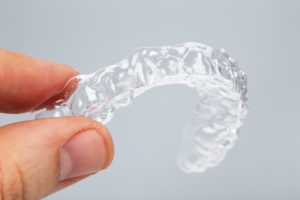
Spaces will tend to stay closed when done through orthodontic or dental repair. To prevent any gaps from developing in the future, make sure to wear your retainer that you will receive after treatment and use it according to your orthodontist’s instructions. For extra protection, your orthodontist might also splint (attach) the backs of the teeth to other teeth with composite and a wire to prevent them from moving. If you notice a space between your teeth or in your child’s mouth, contact your dentist for an evaluation to determine what kind of orthodontic treatment you might need. For more information on how to fix a diastema and improve your oral health, call Belmar Orthodontics at (303) 225-9016 to start improving your smile today!
Is It Too Late For Me To Get Braces?

Most orthodontic patients receive their braces at a young age, typically during the teenage years. Are the teenage years the best time to receive braces, or will treatment work just as well as an adult? With the technological advances that have occurred, adult orthodontics have more options than ever to straighten smiles of all ages. Some benefits of adult orthodontics include correction of life-time dental issues, faster treatment time than former technology, and increased confidence. If you’re ready to change your smile, learn how adult orthodontics can help you through these tips!
Braces Throughout The Years
Modern advances in orthodontic treatment has revolutionized how quickly children and adults alike get the healthy and straight smiles they want, and allowed people of all ages to improve their oral health, no matter their age. For many years, traditional metal brackets were the only option to straighten teeth, but as technology has advanced, a variety of aesthetic bracket systems have been developed to give you the smile you want with braces that are less noticeable and easier to maintain. Permanent braces now come in two options: metal or ceramic. Ceramic braces are matched to teeth color, making them nearly invisible during treatment. Lingual braces are also an option, which are completely disguised from others as they are attached to the back of the teeth. Removable orthodontic appliances have recently come into play as a clear plastic aligner that is used and removed as needed. These aligners are advantageous to adults because they are less visible and easier to clean and maintain, which comes in handy for those adults busy with work and family life. As the options for braces have broadened throughout the years, so has the number of adult patients being treated for braces. Technological advances in the orthodontic industry now allows for more patients, even those who have passed the prime age for orthodontic care, to change their smiles during any part of life.
Benefits of Adult Orthodontics
The American Association of Orthodontists reports that of the 4.5 million Americans that are currently receiving orthodontic care, 25% of them are adults. Although childhood is the ideal time to receive braces, adult orthodontics has become a popular option for those who couldn’t receive treatment during adolescence. Some benefits of adult orthodontics include:
- More discreet treatment methods
- Correction of lifetime dental issues
- Faster treatment time
- Increased self-esteem and confidence
Adults ultimately have more options when choosing what braces and treatment plan is best for them. Orthodontic care protects both kids and adults against tooth decay, tooth loss, gum disease, impaired speech, chewing and jaw problems. While cost is a factor, you will still need an oral evaluation and orthodontics consultation to determine your candidacy for certain procedures and treatments. For the first time, adults of any age who have otherwise healthy teeth can benefit from orthodontic treatment at any point in life.
What To Expect With Adult Orthodontics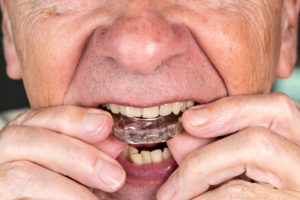
Typically, it is more difficult to manipulate an adult’s fully-developed jawbone compared to the pliable jawbone of a child, but modern-day advances now allow orthodontists to correct crooked teeth with great success and precision. Any oral health issues, such as periodontal (gum) disease, will have to be resolved before teeth can be straightened, so meeting with your dentist and orthodontist will be an important first step to take before treatment can begin. If you’re considering orthodontic treatment to correct any cosmetic or bite issues, consider the following:
- The entire process may take longer for an adult than a child. Typical treatment time averages two years, but varies from person to person.
- Fully-developed bones in adults have stopped growing, so some structural changes cannot be achieved without surgery.
- Adults may need to see a periodontist, as well as a dentist and orthodontist, to ensure that treatment will not be complicated by bone loss due to gum disease.
Adults who have had teeth removed in the past might have difficulties with orthodontic care as old extraction sites might not be suitable for teeth to move into. Adult patients receiving treatment also have a higher risk for root absorption than children do as their bodies reabsorb the root of the tooth, leaving no room for anchorage. This process causes teeth to loosen and fall out over time due to gum instability. Since braces and other appliances are cemented directly to the teeth themselves, it is important that all patients, even adults, maintain good oral health practices that will prevent the areas around the brackets from developing plaque and tooth decay, which will ensure that they get the best (and healthiest) smile possible.
Schedule An Appointment Today
If you are interested in adult orthodontics or are wanting to improve the look of your smile, call Belmar Orthodontics at (303) 225-9016 for a consultation to learn about which options are available for you. Our dedicated team of professionals are determined to help you get the smile that you want and improve your oral health!
Child Orthodontics Compared to Adult Orthodontics
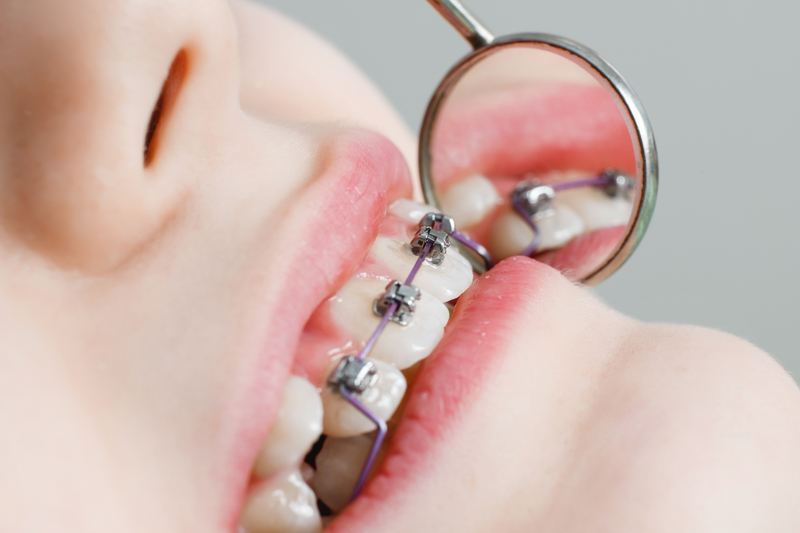
Did you know that about 1/4th of all people with braces are children? Millions of Americans receive orthodontic treatment for bite and alignment correction and for straightening the teeth. However, adults require treatment differently and for longer than a child would need, and child orthodontics have different goals for patients than adult orthodontics do. Both of these areas of orthodontics differ, but are also very similar in techniques used to create a beautiful smile.
Orthodontic Treatment
Orthodontic treatment is one of the easiest ways to help improve your health. Braces can help correct major oral health problems and can help avoid dental emergencies in the future. In children and adults, braces straighten the teeth so that they are aligned properly for speech, eating, biting and more. Straighter teeth are easier to clean and easier to manage, which leads to better health. Teeth must come in at specific places in the mouth for both children and adults. Child orthodontics focuses on that proper bite and tooth placement, and adult orthodontics seeks to improve the look of a smile.
Child Orthodontics
Did you know that children often wear braces, only to get them again as adolescents? Child orthodontics is a popular orthodontic option for at least 1/4th of braces wearers. Dentistry has been around enough centuries to know that the teeth, bite, alignment and growth happen in a specific way. Teeth must come in at the right spot and must be aligned in a specific manner in the jaw. As a child begins to get their baby teeth, some may be crooked. Depending on oral health conditions, and problems such as thumb-sucking, the shape of the teeth and bite can change.
Some children will have teeth that protrude outward, inward, or teeth that are in various directions. This leaves them open to the risk of broken or fractured teeth, tooth decay and problems with speech and development. Child orthodontics is the first phase of getting braces early. It focuses on getting the jaws lined up correctly and the teeth resting on each other in the right way. Once that happens, the baby teeth can fall out and the adult teeth can smoothly come into place. Child orthodontics will correct the major issues a child’s mouth has when they are around 7 or 8 years old. Starting at 11 and later, braces will seek to make the teeth look more attractive.
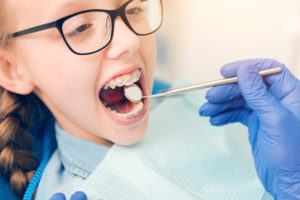
Adult Orthodontics
Most people think that teens make up the majority of patients with braces. However, adult orthodontics is very popular as well, with about 1/4th of all orthodontic patients being adults. There are more adults wearing orthodontic appliances than you realize, especially because of the “invisible options” they have that children don’t have.
Adults have a harder time with straightening their teeth than children do. By adulthood, the mouth and jaws have stopped growing, making them less moldable than a child’s jaws. The treatment that would have been easy for a child may take twice as long for an adult, or may require surgical orthodontics to achieve a straight smile, or proper bite and alignment. However, adults get the benefits of Invisalign treatment and lingual braces, which most children can’t have.
Invisalign is an “invisible” straightening option for adults and teens that uses a strong, clear aligner to straighten the teeth. Digital scanning creates customized aligners that a patient changes out ever 1-2 weeks, which slowly shift the teeth into their proper place. This invisible option allows adults and teens to brush, floss, eat and play sports without brackets and wires in the way. Lingual braces is another “invisible” straightening option. It has metal brackets and wires, except they’re placed on the back of the teeth. Only an adult can use these, as the baby teeth are not large enough for lingual braces to fit. Both adult orthodontics and child orthodontics correct bite, alignment and tooth issues, but the options available to the two age groups differ slightly.
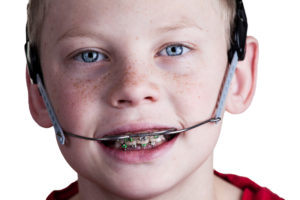
Why Choose Either Option?
When considering orthodontic treatment, there are various aspects you have to think about that include cost, health changes, aesthetic appeal and more. Many people think that braces are very expensive, when they are actually quite affordable. Your family may even save more money over time because of the oral health problems that are avoided by proper orthodontic treatment. A major reason so many people have orthodontic treatment is that they want to improve their smiles. Not only does a straight smile look beautiful, but it helps patients feel more confident. Studies show that child orthodontics helps children feel more confident in school and they do better academically.
Braces can correct speech problems caused by bite and alignment issues. They can straighten the teeth, making them easier to clean, and thus reducing problems with tooth decay, gum disease and bad breath. People socially perceive patients in a more positive way if their smiles are straighter and healthier. No matter if you choose orthodontic treatment for aesthetic appeal or for health reasons, the benefits are worth the time, effort and money you put into your treatment.
Conservative Treatment
Dr. Hardy practices a conservative approach to orthodontic treatment. While it is important for children to have an early orthodontic assessment to look for serious dental concerns (around age 7), the majority of children will not require orthodontic treatment before age 11. Your child might need child orthodontics or they may only need orthodontic treatment as a teen. Some people are naturally born with straight teeth that don’t pose them a problem, or their teeth start to shift later on in life. Whether your child needs child orthodontics or you need adult orthodontics, call Belmar Orthodontics today at (303) 225-9016 for your free consultation!
The Best Ages for Having Braces

If you have a desire to get braces, we commend you for choosing to have a better smile! Studies show that a better, straighter smile can increase your confidence, success and professional life. However, there are some key ages that having braces are the best for patients. If you have bite and alignment issues, it’s best to receive child orthodontics. For straightening, the teenage years are the best for wearing having braces. However, braces can benefit patients at any age and may even be needed more than once in life. Find out what orthodontic treatment can do for you at any age!
Child Orthodontics
The American Association of Orthodontics recommends that children have their first orthodontic visit between the ages of 7 and 8. Having and examination early as a child will detect bite and alignment issues that can become severe later on in life. This early visit is something that you definitely want your child to receive, as bite and alignment issues can lead to problems with speech. If the baby teeth are misaligned, then the adult, permanent teeth will come in misaligned as well. This will eventually lead to cracked, chipped or broken teeth when chewing and biting, as different teeth will take on different amounts of pressure.
There are several different types of bite problems children can have. One is crossbite, where one or more teeth are turned either in towards the tongue or out towards the cheek. Overbite is when the upper teeth overlap the lower teeth too much. Underbite is when the lower front teeth overlap the upper front teeth. In a healthy smile, the upper front teeth will rest on top of (and just a tiny bit forward) of the lower front teeth. If your child does have a bite or alignment problem, it’s easiest to fix while they are young, as the jaw is still growing and forming. Between 7 and 8 years old is the best time for having braces as a child to correct this problem.

Adult Orthodontics
Having braces as a teenager can vary depending on when all the permanent teeth come in. Once the permanent teeth have come in (somewhere around age 12), a child should be seen for a consultation. This is great time to straighten the teeth as the jaw is still growing. However, later in the teenage years and afterwards, the jaw will stop growing and straightening the teeth becomes harder. That is why the teenage years are the best to straighten a child’s teeth. Not only will having braces straighten crooked teeth, but they can also help your child have more confidence because they will produce a beautiful, straight smile after treatment. Straighter teeth are proven to boost confidence in children, teens and adults alike.
Adults benefit from receiving braces at any age. Even though the jaw has stopped forming, it’s never too late to get braces (except if you are in later years and losing your teeth). About 25% of people who have braces are adults. Getting a straighter teeth can boost your confidence and social life. Studies show that employers also hire someone with straight teeth over someone with crooked teeth. Other studies show that people find you more attractive, trustworthy, and datable if you have straight teeth.
Braces Options
Your options for braces will vary slightly depending on your age. In the past, traditional metal braces were your only option for straightening your teeth. This option is the one that has metal brackets attached to the center part of your teeth with a metal wire that goes through them on top and bottom. Metal braces aren’t your only option for treatment. For children, metal and ceramic braces are the best choices and the most economical. Ceramic braces mimic metal braces and have brackets and wires. However, instead of metal, these appliances are made from ceramic material, which matches the natural whiteness of your teeth. This is why they are sometimes known as “clear braces”.
For a more discreet look, lingual braces are also an option for adults. These are metal braces worn on the back of the teeth and custom-fitted to each tooth. However, the most discreet option for having braces is Invisalign. This is a series of transparent aligners that we custom-make for your mouth. You switch out the aligners every week and watch as your smile transforms. The best part about this option is that you can remove the aligners for eating, drinking, brushing your teeth, sports and more.

A Beautiful Smile at Any Age
No matter what option you choose, we know you will love the smile you’ll receive by having braces. Braces are not solely for children or teenagers, but also for adults. It doesn’t matter if you are 7 or 57; braces are great for patients at any age! Having braces will significantly reduce your risk for tooth decay and gum disease as well as broken, cracked or chipped teeth. They can get you ahead in life by helping you feel and appear more confident and successful. To answer the question about the best ages for braces, we say the best time is now! To learn more about what to expect with braces, call Belmar Orthodontics today at (303) 225-9016!
How Important Is it to Wear Your Orthodontic Rubber Bands?
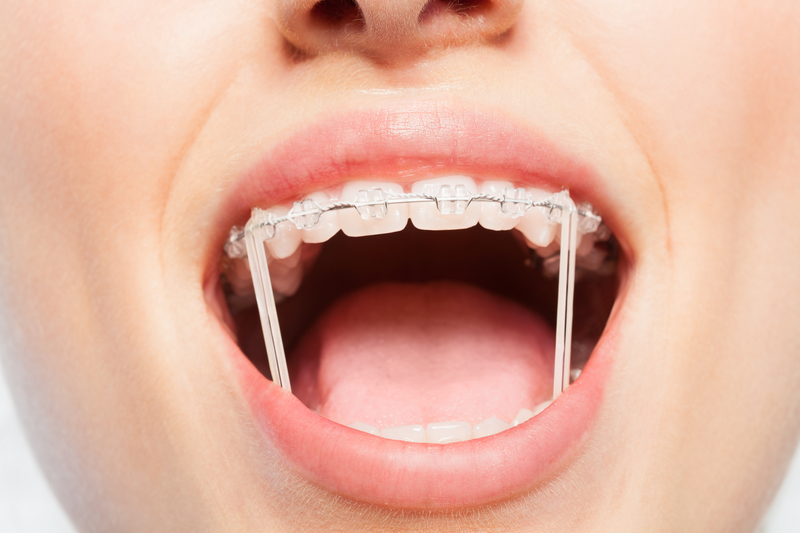
Wearing rubber bands is a critical part of your orthodontic treatment. We ask you to wear them 24 hours a day because they are that critical to the process of straightening your teeth. Knowing why your orthodontic rubber bands are important will help you wear them more. Consider the following reasons you need to wear your bands the next time you are tempted to put them aside.
Types of Braces
We offer several different types of braces at our office. Patients wear orthodontic rubber bands when they have traditional metal braces and ceramic braces. When you think of braces, you probably think of metal braces. These are the ones with square brackets on the front of each tooth and a wire that goes through the brackets on top and bottom. Metal braces are the most economical choice when choosing orthodontic care.
A close cousin to metal braces are clear, ceramic braces. These braces look and act like metal braces, except they are white. They have a white color to them because they are made out of ceramic material, which blends into the natural whiteness of your teeth. This is why they are known as “clear braces”. Ceramic material helps decrease demineralization that can happen when patients wear braces and don’t practice good oral hygiene habits. Both types of braces (metal and ceramic) use orthodontic rubber bands at times to move the teeth in a particular direction.
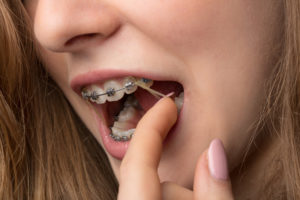
Parts of Braces
Each part of your braces is important when it comes to straightening your teeth in the best way possible in the quickest way possible. Your treatment would be lacking if you were missing any part of your braces, including orthodontic rubber bands.
- Bands – A band is a thin ring fitted to a back molar and cemented to the molar. This is usually made of stainless steel and secures other orthodontic attachments such as hooks, brackets or tubes.
- Brackets – A bracket can be bonded to the tooth with cement or it can be attached to a band. Brackets are usually made of stainless steel or clear ceramic material. They guide and support the archwire into its proper placement.
- Archwire – The archwire guides the shifting of the teeth during orthodontic treatment. Orthodontic attachments (such as the brackets) hold these wires and are made from stainless steel. Some archwires are made of titanium instead of stainless steel.
- Elastic Ties – Available in a variety of colors, elastic ties are small rubber bands that go over the brackets in order to hold the archwire in place.
- Springs – We open or close a space between teeth using the force of a small spring. These springs go between brackets and around the archwire, and are made of stainless steel or titanium.
- Orthodontic Rubber Bands
Orthodontic Rubber Bands
There are several different types of bands for braces. There are orthodontic rubber bands and there are ligatures. Ligatures are the small rubber bands that wrap around the brackets and hold the archwire in place. You will see these bands on children in a variety of colors. We switch out ligatures at every orthodontic appointment and children can mix and match the colors. They go around the brackets and protect the teeth and gums from sharp metal points and are changed when the wire is tightened or the braces are adjusted. These orthodontic rubber bands (the ligatures) are very small, as the brackets are small.
The other type of orthodontic rubber bands adjust your bite and jaw position. These will be slightly bigger orthodontic rubber bands. On your brackets, you have small hooks where these rubber bands attach. Often, you will loop a rubber band around a hook on a bracket on the lower jaw and hook it around another bracket on the upper jaw. Some patients will need several orthodontic rubber bands at a time and others will only need one. These rubber bands will adjust the position of the jaw quicker between visits.

Child Orthodontics
You will commonly see orthodontic rubber bands with child orthodontics. This is orthodontics for children under the age of 10 that need braces to correct bite and alignment issues. Orthodontic rubber bands are critical for making those changes possible. Your child should first see the orthodontist around age 7 or 8. This is a time where we can check that the bite lines up properly and that the adult teeth will come in correctly. If there is a bite or alignment problem, we give your child metal or clear braces to correct that problem. Your child will use orthodontic rubber bands throughout their treatment to provide sufficient force to bring the bite into a straight position.
Although small, orthodontic rubber bands are critical for moving the teeth. With orthodontic care, the teeth shift slowly over time. If you skip wearing these bands, your time with braces will be longer and you won’t be correcting bite and alignment problems. This is why we ask our patients to wear their orthodontic rubber bands 24 hours a day. Each part of your braces is important for creating that beautiful, straight smile you’ve always wanted. To learn more about orthodontic rubber bands or other parts of your braces, call Belmar Orthodontics today at (303) 225-9016!
Braces for Adults—Because A Beautiful Smile Is Ageless
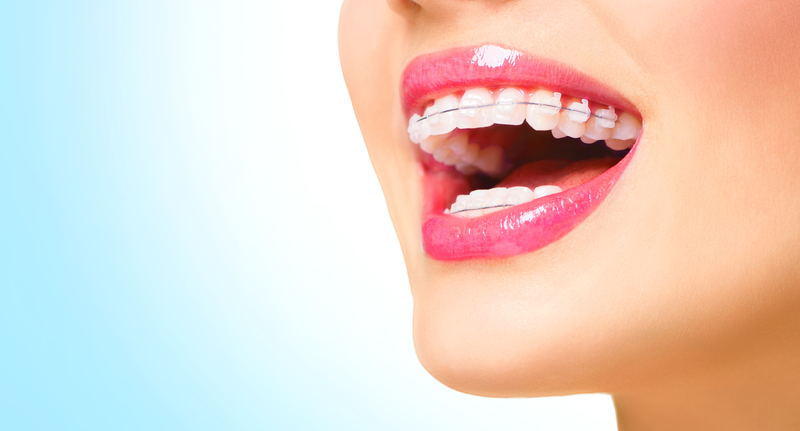
With advances in orthodontics in recent years, more and more adults are seeking out treatment for oral conditions they’ve lived with since childhood. Adults now comprise 50% of orthodontic patients—a major jump from previous decades. However, a beautiful smile knows no age limit. Today’s orthodontic patient has options for braces that they never had before. Learn your options for orthodontics as an adult and why you shouldn’t put off treatment just because you are an adult.
Braces Help Your Oral Health
Most people know that braces are for straightening your smile into something beautiful. Not everyone knows that braces can help improve your oral health significantly. If your teeth are crooked, they become much harder to brush, as teeth are at angles that make it difficult to reach every surface of your tooth. Flossing is even harder with crooked teeth. If you don’t properly clean away plaque that coats your tooth enamel, then you will most likely find yourself with some form of tooth decay or signs of gum disease. Cleaning your teeth also becomes a daily struggle, as you must clear away plaque every single day to avoid oral health issues.
Teeth that are straighter are much easier to clean and they take less time. The American Dental Association recommends brushing your teeth at least twice a day to remove plaque that erodes away your tooth enamel. Patients should also floss at least once a day. Those tasks are very easy to do when your teeth are straight and you can clean them in just a minute or two. Orthodontics is also great because an orthodontist has been to dental school and can direct you to a dentist if they notice oral health issues forming.
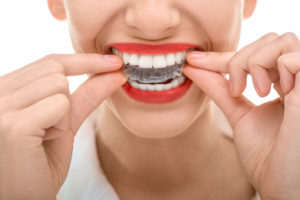
Correcting Bite and Alignment
Having proper bite and alignment is critical for speech. We treat children often for bite and alignment issues, as these are easily correctable when a person is young and the jaw is still forming. For child orthodontics, we take special care to ensure that the upper and lower jaws line up with one another properly. An incorrect alignment can put you at risk for broken teeth later on in life and can affect your ability to speak, eat, bite and chew correctly.
Although it is more difficult to do as an adult, we can perform orthodontic treatments that can correct bite and alignment issues. If you have had a speech impediment all your life due to bite or alignment issues, you can finally find a remedy through orthodontic straightening! For severe cases of bite and alignment issues as an adult, surgical orthodontics may be the best way to transform your smile.
Get Ahead Professionally
There are around 4.5 million Americans that receive orthodontic treatment via braces each year. 25% of those patients are adults. In fact, each year more and more adults find themselves with adult braces. Not only can orthodontic treatment help your oral health, but it can also help get you ahead professionally. Studies show that those who receive orthodontic treatment appear more confident, successful, trustworthy and attractive to their peers. People with straighter teeth are considered happier and healthier. They are also 38% more likely to be perceived as smart. Your teeth are one of the first facial features others notice. Make an impression that will wow others by straightening your teeth!

Your Treatment Options
Adults get the best deal when it comes to orthodontics: they have every option available to them! Children and teenagers are limited in their orthodontic options, but adults can choose what orthodontic treatment they want. You can choose traditional metal braces to straighten your teeth, ceramic braces, lingual braces or Invisalign treatment. Ceramic braces are similar to traditional metal braces, except that they are made from naturally-white ceramic material. Even the archwire can be made white like the brackets to blend in with the whiteness of your teeth.
Lingual braces are one of our most popular adult braces options. These are essential metal braces that are custom-made to fit the back of each of your teeth. We take impressions of your teeth and create a metal shell for your tooth-back complete with brackets and an archwire. Others won’t realize you have adult braces because this hidden apparatus lies on the tongue-side of your teeth.
For an even more discrete straightening option (which is a favorite among adults), you can invest your time in Invisalign. This is a series of transparent aligners that we custom-make for your teeth. Using digital technology, we can map out the trajectory of your teeth as they straighten and make aligners you can wear and switch out every 1-2 weeks. Adults love this option because they have the freedom to remove the aligners as they please. You can remove them for eating, sports activities, and cleaning your teeth as you normally do. This is an option that provides amazing freedom while undergoing adult braces treatment.
Receive Your Adult Braces today!
There are many benefits for receiving adult braces. You can improve your oral health and decrease your risk for tooth decay and gum disease. You can boost your confidence, correct bite and alignment, and exude success with a straighter smile. If you would love to have the benefits associated with adult braces, call Belmar Orthodontics today at (303) 225-9016 and we’ll find a treatment plan that’s right for you!
Straightening Your Teeth Incognito-Style

Unlike traditional braces, Incognito or lingual braces are placed on the back of your teeth where they cannot be seen easily. This hidden orthodontics method is growing in popularity among those concerned about their appearance with braces. Incognito braces are completely customized to fit your mouth. If you are a working professional, a teen concerned about your appearance, a musician who plays a wind instrument, an athlete who engages in contact sports, or anyone who needs to keep the tooth-straightening behind the scenes, Incognito braces may be for you! What do Miley Cyrus, Duchess Kate Middleton, and Myleene Klass have in common? They all have benefited from the use of lingual braces! You can too!
Braces Are the Best Way to Straighten Teeth
There are many changes you can make to your appearance to help you get a leg up in your social and professional life. One of the best ways to do that is through straightening your smile. The only problem? You have to have your teeth professionally straightened so that they are done right. That’s why orthodontists exist and that’s what we specialize in—straightening your teeth.
Braces can not only improve your smile, but they can improve your confidence as well. Countless studies show that those who straighten their teeth end up having higher self esteem and confidence. Some studies—such as one done by Invisalign—showed that those with straighter teeth were perceived as more confident, successful, attractive and even trustworthy. Not bad for simply changing your smile, right?
Braces also help keep your teeth healthier. How? Crooked teeth provide plaque (and the food that makes plaque) plenty of places to get stuck. Food that becomes stuck is food that will eventually start wearing away your tooth enamel. Food particles become stuck much easier with crooked teeth than they do with straight teeth. Crooked teeth are harder to clean, are more awkward in your mouth, and they can even break easier. When you bite and chew, you exert pressure on your teeth to break up food into smaller pieces. That pressure can cause crooked teeth to crack or break, as some teeth with receive more pressure than other teeth. Straightening your teeth through braces is the best way to get your teeth healthier and prevent broken teeth.
For many adults, the thought of wearing braces for months makes them not want to straighten their teeth. That’s despite all the benefits straightening your teeth can give you. Many adults think of traditional metal braces and don’t want others to see a mouth full of metal. Millions have felt this way, so technology changed to allow adults (and even teens) the option of straightening your smile in secret.
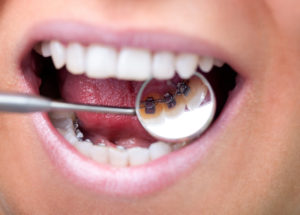
Incognito Lingual Braces
One of the best ways we straighten your teeth in secret is through Incognito lingual braces. If you’ve never heard of these, then you’re in for a treat! Traditional metal braces straighten the teeth amazingly well. That’s why these braces are referred to as “traditional” metal braces. However, some patients don’t love the thought of having a “metal mouth”. The remedy for that? Braces that lie behind the teeth instead of front and center on the teeth. We call these “incognito” braces because they are a hidden metal apparatus on the tongue-side of your teeth. It’s the perfect solution for having the strength and power of metal braces without compromising your appearance.
Millions of people wear braces each year. At least 1/4th of braces wearers are children and about the same amount are adults. Adults need options that allow them to keep their smile white and bright while also straightening it. We custom-make metal brackets for the back of each of your teeth after taking impressions of your mouth. We fit the metal to your teeth and will include brackets and an archwire just like traditional braces. Except, the entire appliance will stay hidden. Others will notice your smile improving over time, but they won’t know that it’s changing through metal braces. Straightening your teeth is easy through Incognito-style braces.
You Have Options
If you’re not completely sold on the idea of Incognito braces, you can call our office to learn more or even come in to the office to see these type of braces for yourself. However, we do have other options you can utilize for straightening your teeth. If you are looking for a similar discrete option comparable to lingual braces, you can investigate Invisalign.
Invisalign is a series of transparent aligners that transform your smile into something beautiful. You simply receive custom aligners every 1-2 weeks that slowly shape your smile into the straight pearly whites you’ve always wanted. You can remove the aligners for eating and drinking, sports activities, and for cleaning your teeth. It’s a simple, no-hassle option for straightening your teeth.
Clear, ceramic braces are also an option for those who like the idea of braces but also want them to be more hidden than metal on white teeth. Our ceramic materials mimic traditional metal braces (which we also offer), but these materials are naturally white, so they will blend in with your teeth. We can even make the archwire white as well. When it comes to straightening your teeth, you have options. However, our patients love the sturdiness of our Incognito lingual braces mixed with the hidden nature of this type of braces. We think you’ll love this option as well!
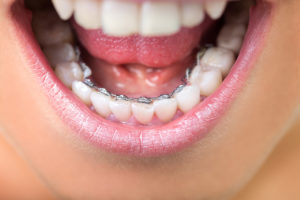
Improve Your Smile
If you could boost your confidence and self esteem, would you do it? You can through incognito braces! The best part about these amazing appliances is that no one ever has to know you are wearing braces. However, they will notice how awesome your smile looks. Others may even follow your example and straighten their own teeth. If you want to improve your smile today, don’t hesitate to take action! Call our Belmar Orthodontics office today at (303) 225-9016 to learn more about Incognito lingual braces!
How Do Adult and Child Orthodontics Differ?

Advancements in adult and child orthodontics have triggered a rise in adults seeking treatment for oral challenges they have had for years. When deciding to pursue orthodontic treatment, understanding the differences between adult and child orthodontics can help you decide what type of treatment is right for you. Everyone should want their best smile. Feeling confident about your teeth and smile is essential for healthy self-esteem and confidence. You can achieve both of those benefits with braces.
Benefits of Braces
For years, braces have helped millions of people receive a more beautiful smile. About 4 million Americans on average each year are wearing braces. You may think that braces are mostly for teenagers, but you may be surprised to know that about 25% of braces wearers are actually adults. A large portion of those 4 million are also children. Braces benefit people of all ages and it’s never too late to get your own set. Why are braces so important? Straighter teeth keep the mouth in proper alignment and help even out the pressure placed on the jaw each time you talk, bite, eat and more. When the teeth are straighter, they are easier to clean, especially to floss in between the teeth. This is why people with straighter teeth have a reduced risk for oral health problems such as tooth decay and gum disease.
Tooth Decay and Gum Disease
The biggest oral health problems are tooth decay and gum disease. These problems come from lack of good oral hygiene habits. If you skip on brushing and flossing the teeth (or not doing them enough) you may start to have problems. When food sits on the teeth, the sugars from the food you ate (or drank) mix with bacteria in the mouth. This mixture creates a sticky acidic substance called plaque. That plaque works hard to erode your tooth enamel. If it sits on the teeth long enough without being cleaned through brushing or flossing, it will seep into the center of your tooth, called the pulp. This is where that acidic plaque will start to decay your tooth. If left untreated, the problem can become severe. Tooth decay is the most wide-spread childhood disease.
Gum disease is similar to tooth decay, but it has to do with the gums. Plaque is not your friend in this case either. When it sits on the teeth for too long, it can irritate the gums. You may notice your gums begin to turn more red and they may become inflamed. Over time, if good oral hygiene habits are not established, the gums will begin to recede from the teeth. This can eventually cause the teeth to begin falling out. About 64.7 million American adults suffer from some form of gum disease. That’s not even including the number for children! Even though tooth decay and gum disease are so wide-spread, they can both be prevented by brushing and flossing several times a day and by establishing and keeping good oral hygiene habits.
Child Orthodontics
One area we specialize in is child orthodontics. A large portion of the people that wear braces are children. The American Association of Orthodontics recommends that children have their first orthodontic visit between ages 7 and 8. Having an examination early-on helps prevent the progression of orthodontic issues that may be present. In children, we can detect certain orthodontic problems—such as underbite or crossbite—that are present. These problems can be fixed with child orthodontics and other bite and alignment problems such as overbite, openbite and malocclusion. The jaw is still forming in children, so performing child orthodontics at this age can help easily correct problems that are harder to deal with as an adult. Even if your child does not show any signs or symptoms of orthodontic complications, you can still benefit from child orthodontics. Some benefits include:
- Monitoring the facial and jaw development
- Observing the progress of incoming teeth
- Guiding incoming teeth into their proper positions
- Reducing the risk of impacted teeth
- Decreasing the risk for permanent tooth extractions
- Detecting hidden dental issues
Adult Orthodontics
Adult and child orthodontics are very similar. However, it often takes longer to correct bite and alignment problems in adults than it does children or teenagers. This is because the jaw and mouth has stopped growing by adulthood. If bite or alignment problems are severe, an adult may have to look into receiving surgery to correct the problem. Adults also have a few more options when it comes to what kind of braces they would like. Adults and teenagers have the option to choose these types of braces besides traditional metal braces:
- Lingual Braces – These are also known as “Incognito” braces. They are a hidden braces apparatus on the tongue-side of your teeth. Worn on the inside, no one will even know you are wearing braces.
- Invisalign Transparent Aligners – This is a series of removable transparent aligners that are custom-made for your teeth. They can be removed for activities such as eating, drinking, sports and more. Because they are transparent, they are also a secret way for adults and teenagers to discreetly straighten their teeth.
- Clear Ceramic Braces – Made of ceramic material, these braces fit in with the color of your natural teeth. Ceramic material helps reduce the risk for demineralization and staining.
Your New Smile
Whether you are an adult or child, it’s never too late to improve your smile! For people of all ages, a straight smile boosts confidence and self esteem. For adults, that new smile of yours could help you land a job. Studies have also shown that straighter smiles make you appear more confident, successful, attractive and even more trustworthy to others. The benefits of braces are just too good to pass up! If you would like a new smile today, call our Belmar Orthodontics office at (303) 225-9016!
Invisalign Transparent Aligners or Metal Braces?
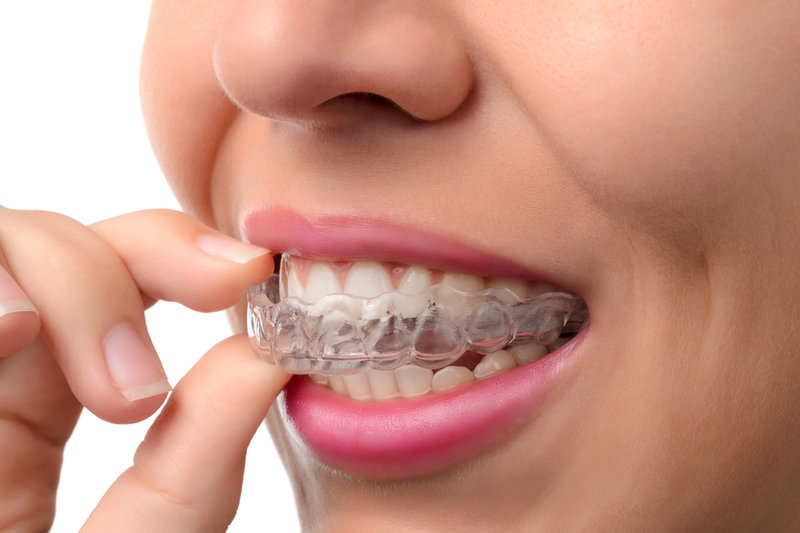
Woman wearing orthodontic silicone trainer. Invisible braces
We offer many different straightening methods at Belmar Orthodontics including Invisalign transparent aligners and traditional metal braces. In the past, traditional metal brackets were the only option for teeth straightening around. With the advancement of technology, we are now able to align the teeth with transparent aligners that work just as well as metal brackets. What are the differences between aligners and metal brackets? Which option is better for you when it comes to choosing between the two? We can answer all of your questions about Invisalign aligners and traditional metal braces and help you find the right straightening method for you.
Traditional Metal Braces
Metal braces are also known as “traditional” braces? Why? They’ve been around for decades and have proven time and time again that they work. Years ago they became the go-to option for orthodontic care and have stood the test of time. There have been tweaks here and there to make metal braces more modern, but overall, not much has changed. They are still the most popular option for braces among teenagers and the most economical choice for orthodontic care.
Metal braces consist of metal square brackets that are attached to the center of each tooth with a special type of bonding glue. This glue is strong enough that the brackets stay bonded to your teeth, but also versatile enough that the glue can be removed once treatment has come to an end. Metal braces have a thin wire that connects and goes through each bracket on the upper and lower jaw. In total, you will have two wires. These are known as “archwires” and they create an arch in your mouth that follows the natural curve of the jaw. Over time, these archwires will move the teeth into proper place so that they make the perfect, straight arch on the upper and lower jaw.
What Are Invisalign Transparent Aligners?
If you’ve looked into options for orthodontic care, you may already be familiar with Invisalign. This treatment option is a series of transparent aligners that slowly mold your teeth into proper position over time. Your doctor will scan your teeth using a digital scanning system that will then create 3D images of your teeth. You will then receive custom-made aligners made from Invisalign’s SmartTrack material. This material is transparent yet strong. The clear, removable design of these aligners renders this orthodontic treatment virtually invisible to others.
The best part is that Invisalign works well just like traditional metal braces do for shaping your smile. Simply change out your transparent aligners ever 1-2 weeks and watch how your smile changes over time. Adults and teenagers alike love this option for orthodontic care because of their ease of use Patients can eat, drink, and clean their teeth with ease. These aligners must be worn the majority of the day, but can be removed when needed for certain activities. Invisalign transparent aligners are more costly than metal braces, but you gain the benefits of easy use and cleaning, and the ability to straighten your teeth in secret.
Adult Orthodontics
Orthodontic care is not only for teenagers. About 25% of all braces wearers are adults, which is a higher percentage than it’s been in the past. Why is this? In decades and years past, people only had one choice when it came to braces: traditional metal braces. Some adults and teenagers avoid receiving braces although their smile needs them. Why? Because they don’t like the look of braces or they feel they are unattractive, distracting, or childish. Studies actually show that braces are quite the luxury to have. However, modern-day orthodontics offer treatment options everyone can be comfortable with.
Your Options
Options for orthodontic care include both traditional metal braces and Invisalign transparent aligners, but you can also choose
- Ceramic Braces – These are the same size and shape as metal braces. They function similarly to traditional metal brackets but they use ceramic brackets that are made to match the color of your teeth. Many patients love this cosmetic benefit of blending the braces to the teeth. Even the archwire can be made white! The ceramic has been shown to be much more resistant to staining and helps protect your smile from demineralization.
- Lingual Braces – Lingual braces are an amazing alternative to traditional metal braces. Lingual braces are a close cousin to metal braces. They actually look quite the same, except for the fact that the braces run along the inside of the teeth next to the tongue. You can achieve the same results as traditional orthodontics in a manner that is inconspicuous and undetectable. Dr. Hardy will make a custom mold of your teeth so that custom metal pieces can be made for each tooth back. These will then be attached snug to the inside of the tooth along with the brackets. An archwire will complete the braces and you can begin to experience the straightening power of lingual braces.
Keep Your Smile Straight
It’s never too late to correct orthodontic conditions you have. The benefits of adult orthodontics include: faster treatment time than former techniques, more discreet treatment options, correction of dental issues, increased confidence and even increased self esteem. When it comes to starting your journey to a straighter smile, we have options for you! To see if you are a great fit for ceramic braces or Incognito lingual braces, contact our Belmar Orthodontics office today at (303) 225-9016 for your free consultation. A straighter smile is just one call away!

